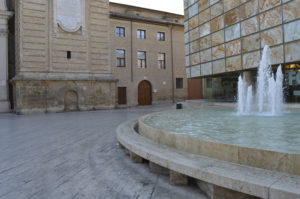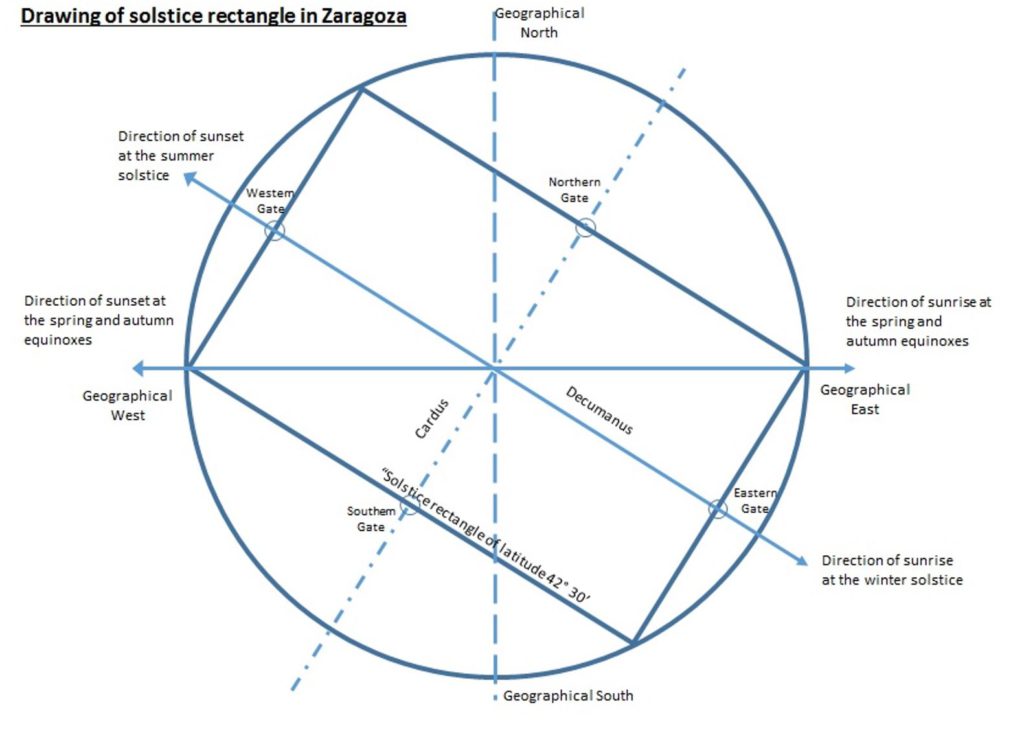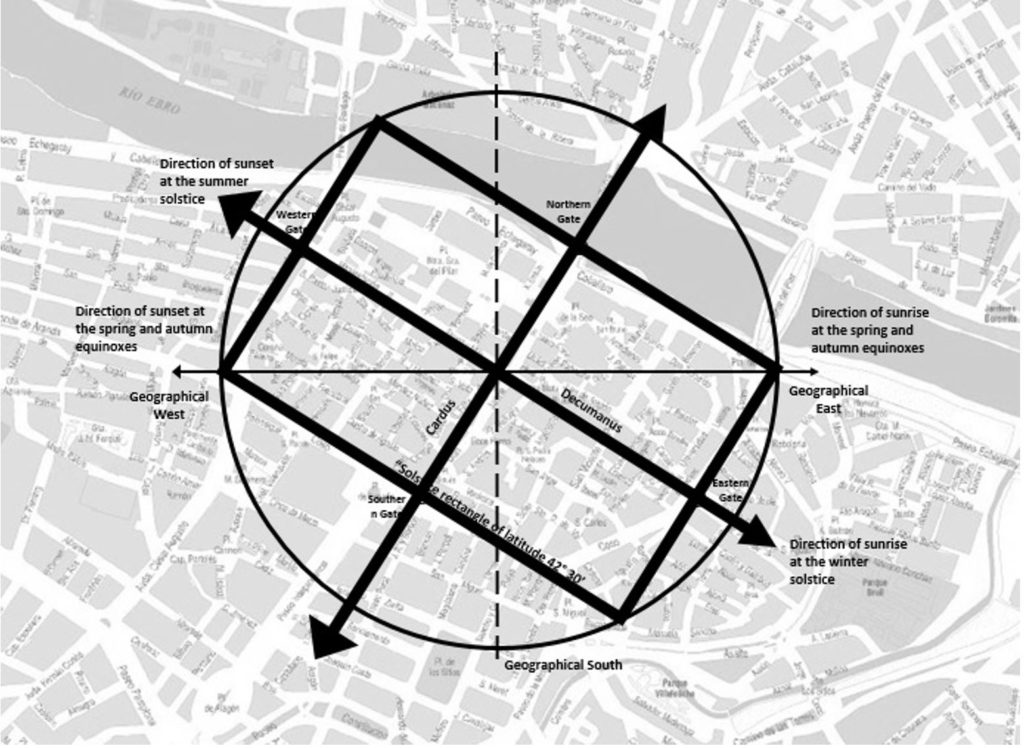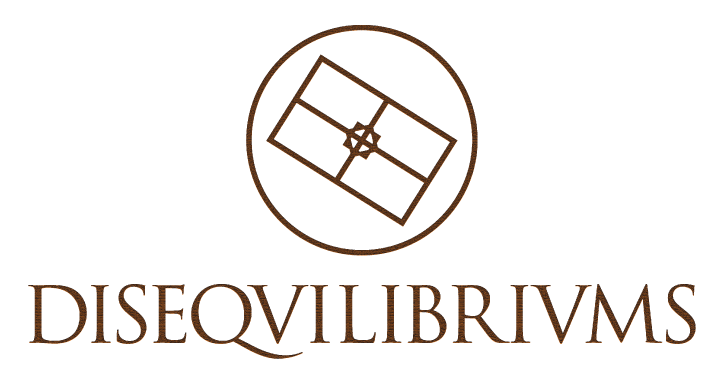DISEQUILIBRIUMS. The Individuals. Chapter 17
CHAPTER 17
Monday 19 December 2016
Time: 6:00 pm

Normally, young boys on skateboards practise their new moves near the entrance of the Cathedral of the Saviour (La Seo) and next to the entrance of the old Roman forum. They use the slope for their jumps and use the steps near the fountain to try out their spins. Today, there is no one here because of the cold. The sun continues shining, but the wind makes it bitterly cold at this time of year.
According to my mother, the Plaza de la Seo was different before. It seemed smaller, with a pedestrianised area in the city centre, and surrounded by a street to accommodate traffic. The most notable feature in the plaza are the trees which are very welcome on hot summer days when temperatures rise to over 40 degrees. Nowadays, as I all too well know, there is no shade whatsoever. This plaza is a continuation of the great airy space of the adjacent Plaza del Pilar. Basically, it is like an extension of the other, although there are various different levels on the ground. Some steps go up 20 cm in threes, parallel to Don Jaime Street, then drop five more to the level of the plaza. Mostly, they are used as places for people to sit.
The fountain’s water surface extends to the tall monument in the middle of the plaza and the steps used for seating run along the entire length of the fountain. At 20 metres in height, there are three sheer rectangular walls covered in huge light brown tiles and erected to touch each other along their shorter sides. Just beneath, there is a sign indicating the entrance to the Roman Forum.
Among the four sides of the plaza, one is Don Jaime I Street and another is a three-storey building painted in ochre which stands out against the white facade of the chapel adjoining the Cathedral of the Saviour on the opposite side of the street. The main entrance to the Cathedral is finished in the same colour of the dark brick of the rest of the church. I feel so tiny next to this building and the enormous monument.
When the weather is good, there are quite a lot of people milling around, but not today.
Taking advantage of the fountain steps being empty and there is no one in the plaza, I sit down first, but near ground level for protection against the wind. I spread out flat the large map of the city of Zaragoza given to us a few minutes earlier at the Tourist Office, after we left Nicola’s house.
Erik who, for some time has not made any attempt to hold my hand, looks at me in silence. He then mechanically superimposes on the map a transparency that Elsa has purchased in the shop on the corner. On it we draw the rectangle with the lines the guide at the museum had given us, but to scale.
Don’t ask me how, but Samuel produces a small ruler, a set square and a protractor from his pockets. He sure is unpredictable, never ceasing to amaze me.
Looking on, Elsa says:
“That is exactly what Nicola told us to do – to put the rectangle on the map of Zaragoza.”
David stoops down to see it in detail and exclaims:
“It’s incredible! How they match! Just by shifting the Cardus and the Decumanus and the rectangle.”
The wind abates a little, but the cold is as intense as ever. The grey clouds floating across the sky above us indicate that it is going to rain soon. No one notices us, not because of a lack of interest, but because the place is deserted. Quite literally we have the plaza to ourselves. I love that.
As they all observe the map, I am able to get a look at David, and see how good his fringe looks on him and how attractive he is today. I suppose that all rowers have bodies as fit as his. I don’t reckon he has an ounce of extra fat on him. Today, he has been particularly nice… but why am I looking at him? Erik also looks very handsome today. What is happening to me? David is just my friend and Erik is my boyfriend. That’s all! Let’s get back to the task in hand.
“And we can see the four gates to the city and the corners,” I comment. “It is clear that it is not lined up with the north.”
“Then,’ says Erik, without looking at me, “it is as Nicola has said. The drawing they gave you is a solstice rectangle.”
By using the rectangle on the drawing he is holding, he indicates the various directions of the setting and the rising of the sun at the different solstices and equinoxes. According to Nicola, the outline of the Roman city walls is drawn within the boundaries of the rectangle, the proportions of which are not arbitrary since they maintain proportionality between its sides, which are linked to the latitude of the city of Zaragoza.
I recognise that, until a few hours ago at Nicola’s house, no one had ever heard of a ‘solstice rectangle’. I don’t know what to think. Fortunately, Erik seeing our blank faces when the rectangle was mentioned, is now reading out the explanation from the Internet on his tablet:
The solstice rectangle has a specific proportion determined by the orientation of the sunrise at the summer solstice. With regard to the north, this angle, called the azimuth, differs in latitude to the one we find ourselves in now, which requires the orientation to be calculated by the shadow created by the vertical pole on that solar day. Once the shadow had been marked, a circle was drawn. The intersection of the shadow on the circle defined the rectangle that was inscribed in the circle, with its diagonal corresponding with the shadow….
We watch him slide his finger across the screen from the bottom to the top to continue reading the text:
This geometrical pattern was fundamental in creating any sacred construction, and was used by all cultures.
“Impressive!” I exclaim. “I had no idea.”
The others are silent, but from their faces, I can glean that the identical thought must have occurred to them at the same time as me. I am beginning to enjoy this more and more. We seem to be opening a door to a room that we have not entered before. And the woman at the ice-cream parlour? What do I do with the information she gave me later in the Plaza San Felipe? Danger? I don’t want to believe it. But, her eyes… There was an unfathomable depth within that look. And what the guard at the museum said to Elsa. How could I forget it?
“It is the second time that the mention of a sacred city has come up, and now a sacred construction,” David points out. I focus back on the conversation.
“And so, by rotating it a little,” Elsa suggests as she moves the transparency with the rectangle on top of the map. “The Cardus and the Decumanus of the two streets coincide.”

David and Elsa exclaim at the same time:
“The alignment is mind-blowing! Nicola was right!”
We remain silent, all observing and turning the transparency around to check each of the orientations and alignments in turn.
Samuel stuns us all by saying, “And don’t forget what the old man said.”
The problem is that when he speaks, he does it so quickly and in such abrupt tones that I sometimes find it hard to understand him. He picks up his notepad and begins to read:
This rectangle is known in operational geometry as the ‘solstice rectangle’ and it has the power to harmonise the energies at the core of the Earth, commanding the four elements (fire, water, earth and air), in its four corners, and the fifth element, ether, at its centre.
Elsa stops looking at the map and stares at me:
“Why did you tell the old man that you knew what the rectangle was?”
There is a slight silence as my four friends stare at me. I feel as if I am being interrogated. But I am not bothered. I am about to answer. But I pause as the bells at the cathedral begin to ring. It is 7 pm.
“Because it is in the book that my father left open on the day he disappeared,” I reply when, at last, the bells have stopped, and looking at the paper, I continue: “Since he never returned from his last expedition, my mother has never wanted to touch anything on his desk.” I remain silent as I look at the map. “The disappearance of my father was a total shock for her. Just think about it, he went on some excavation in the north of Italy and then disappeared. He was never heard of again. That was what the authorities told my mother after searching for him for a month which they normally give for people who have disappeared. She sank into a deep depression for the next month. Then, suddenly she perked up, became more active at home again and started rearranging my father’s things in all the rooms, all except in his office.”
I don’t think I have ever filled them in with so many details before. I feel relieved and above all, I feel listened to and cared for by my friends. Elsa is looking at me with so much tenderness that I could have hugged her there and then. I swallow hard before carrying on.
“As you can imagine,” I continue, “because he was a researcher, his desk was always in a total mess. Apart from being a History professor at the University, he had various on-going research projects, and he left everything there on his desk. Don’t ask me why. My mother does not want to touch anything. She says that when one of her children grows up and learns about the same field, they might carry on his research. The truth is that I don’t like History. I hope my brother or sister can realise my mother’s dream.”
I pause a while, only to confirm that they are listening. Then I continue:
“After I looked at the paper the guide at the museum gave me, I checked one of the books on my father’s desk. It was open on page 23 with the same drawing on it. The name of the book was The City of Zaragoza, Nomenclarot, 1808.”
As I have it with me today in my bag, I take it out in case anyone wants to leaf through it. Samuel practically snatches it from my hands and starts rifling through it.
“But for as much as I read, I still could not understand why it was on a tilt. I checked the internet and I saw that other cities in the world were built following the Cardus and Decumanus principle, but none of them were tilted. I’m sure that there must be one, but I couldn’t find any, except this one: Caesaraugusta.”
I feel a drop on my hand. Damn! It’s beginning to rain. We quickly gather up the map and the rest of things we had laid out.
“There is only one more important thing we need to do: to verify the rest,” David says as we try to run into the arcades.
Deep down, I am relieved by his comment. Otherwise, I would be the only crazy one here.
We keep on running.
Now, we are sheltering from the rain in the arcades just in front of the Las Palomas restaurant.
Erik spreads out the map once more on the ground and we cluster around him. Here, however, we’ve managed to attract some attention. A few passers-by have also sort shelter where we are waiting for it to stop raining. Curious to find out what we are doing, some come closer to look over our shoulders.
Fortunately, we have Samuel with us. With a couple of swear words, he manages to frighten them off. We look at each other, shrug our shoulders and focus on the map again.
Looking at us and adopting an attitude I have never seen before, Erik begins to take charge, arranging the maps and the papers, and says:
“Let’s go over what we have. According to this, Don Jaime I Street is the Cardus, and the Calle Mayor, with Espoz and Mina streets further down, the Decumanus. We know where the four gates are: one opposite the Stone bridge, the other next to the Roman walls, the third is the entrance to El Tubo District, and the fourth is the Plaza de la Magdalena.

Elsa looks at him and then asks us:
“And this, what does this have to do with all the adults falling over?”
She manages to wipe the smile from our faces… all except Samuel’s.
Support the project and buy the book:
Writer: Glen Lapson © 2016
English translator: Rose Cartledge
Publisher: Fundacion ECUUP
Project: Disequilibriums
Register on the website www.disequilibriums.com/en/registred and you will receive a notification to allow you to read the chapters as they are published and updates of the project.

No Comments